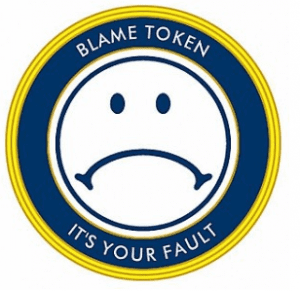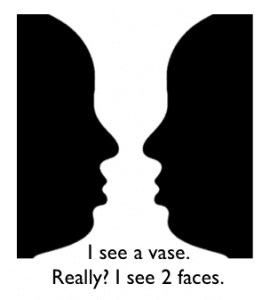 Welcome to the fourth installment of the Dangerous Mindsets series. Previously I talked about the dangerous mindsets of the Starter, the Subordinate and the Specialist. This article addresses the Superior or, more appropriately, the Superior with personal issues and how that can impact situational awareness and team safety. It would be rare for a supervisor with a balanced ego and a healthy self-esteem to possess this dangerous mindset. Rather, it is often the boss who lets their authority get the best of their judgment or a boss who suffers from a feeling of inadequacy (inferiority) that results in a dangerous mindset.
Welcome to the fourth installment of the Dangerous Mindsets series. Previously I talked about the dangerous mindsets of the Starter, the Subordinate and the Specialist. This article addresses the Superior or, more appropriately, the Superior with personal issues and how that can impact situational awareness and team safety. It would be rare for a supervisor with a balanced ego and a healthy self-esteem to possess this dangerous mindset. Rather, it is often the boss who lets their authority get the best of their judgment or a boss who suffers from a feeling of inadequacy (inferiority) that results in a dangerous mindset.
 There is a great deal of stress that comes with being in charge of a team at an emergency scene and being responsible for their safety. Stressful situations, unfortunately, do not create character. Rather, they reveal character and, as it relates to this article, the true character of some company officers and supervisors. A leader whose ego and self-esteem are in-check (i.e., balanced) will not falter under stress. Their demeanor remains consistent and predictable, professional and personable. They understand their fallibility and welcome feedback about their decisions, especially when they may be making strategic or tactical errors based on flawed situational awareness.
There is a great deal of stress that comes with being in charge of a team at an emergency scene and being responsible for their safety. Stressful situations, unfortunately, do not create character. Rather, they reveal character and, as it relates to this article, the true character of some company officers and supervisors. A leader whose ego and self-esteem are in-check (i.e., balanced) will not falter under stress. Their demeanor remains consistent and predictable, professional and personable. They understand their fallibility and welcome feedback about their decisions, especially when they may be making strategic or tactical errors based on flawed situational awareness.
In my travels and presentations on situational awareness I see leaders with health egos and I see leaders with unhealthy egos. The strong, principled leader says things like:
“If I’m screwing up, I want someone to tell me… right here… right now! I know I can miss things and I want the members of my team to know I value their input and their willingness to help me ensure the safety of our personnel.”
This leader demonstrates an appreciation for the value of team-based decision making and shared situational awareness. This leaders also understands and respects his or her own vulnerabilities.
Conversely, the weak leader says things like:
“Emergency scenes run under a paramilitary hierarchy. There’s no place for debate and discussion about my decisions and orders. It’s my job to give the orders and the subordinate’s job to follow the orders. If they don’t like the order, that’s too bad.”
This leader demonstrates no appreciation for how team members can contribute to improved decision making and the importance of shared situational awareness. This leader lacks an understanding and a respect for his or her vulnerabilities.
The badge tapper
 Recently, while conducting a leadership class in Indiana, I got introduced to the term “badge tapper.” In the context of our leadership discussion, the student said when he goes to his supervisor for an explanation for why a decision was made the supervisor takes his right index finger and, while tapping a badge or indicating a badge on this/her chest, says: “That’s why you have to do it.”
Recently, while conducting a leadership class in Indiana, I got introduced to the term “badge tapper.” In the context of our leadership discussion, the student said when he goes to his supervisor for an explanation for why a decision was made the supervisor takes his right index finger and, while tapping a badge or indicating a badge on this/her chest, says: “That’s why you have to do it.”
Such an ego-driven response does little to ensure the subordinate has an understanding of the leader’s decision making process and it is likely to leave the subordinate feeling his or her input is not valued. The badge tapper is suffering from gold poisoning and allowing ego to eat his or her brain. Not only is this demoralizing, it can be downright dangerous.
Superiority complex
A person with a superiority complex is, ironically, a person who feels inferior and makes up for their feelings of inadequacy by acting superior toward others. On an emergency scene, this may be manifested as feeling and acting as though subordinates are inferior in their knowledge, skills and abilities. It can be compounded by the supervisor making overt statements that affirms his or her superiority over the subordinate, often in the presence of others (affirming to the ill-minded leader their sense of superiority). The Superior will be closed-minded to the input of others and will refuse to allow a subordinate to even suggest the Superior’s decision (or the Superior’s situational awareness) may be flawed. This can have dangerous consequences for first responder safety.
Placing blame
 The Superior, plagued with an over inflated ego and a low self-esteem, rarely accepts responsibility for their flawed decisions or poor situational awareness. Rather, they are far more likely to find a subordinate to blame. Occasionally there may even be a boss to blame. But never are mistakes the fault of the Superior leader. This can make for a miserable existence among followers who know that, even if things are going to hell in a hand basket, the Superior leader is not going to welcome feedback or suggestions. A Superior looks for blame like there’s going to be a reward when it’s found.
The Superior, plagued with an over inflated ego and a low self-esteem, rarely accepts responsibility for their flawed decisions or poor situational awareness. Rather, they are far more likely to find a subordinate to blame. Occasionally there may even be a boss to blame. But never are mistakes the fault of the Superior leader. This can make for a miserable existence among followers who know that, even if things are going to hell in a hand basket, the Superior leader is not going to welcome feedback or suggestions. A Superior looks for blame like there’s going to be a reward when it’s found.
Shared situational awareness
There are three types of situational awareness a responder needs to be concerned about. First is personal situational awareness. This is the situational awareness you have about yourself, your abilities and limitation, your task and your surroundings. Second is team situational awareness. This is the situational awareness you have about your team, your team’s abilities and limitations, your team’s task and your team’s surroundings. Finally, you have incident situational awareness which is your situational awareness about the big picture incident, the abilities and limitations of all the scene’s resources, the strategic objectives of the incident and the role you and your team plays in the accomplishment of those objectives.
 Situational awareness is, therefore, not just something developed and maintained at the individual level. Rather it is also developed and maintained at the company and command level as well. But it doesn’t end there. For situational awareness to be strong, it must be shared, or perhaps more appropriately stated, ,commonly understood among all responders.
Situational awareness is, therefore, not just something developed and maintained at the individual level. Rather it is also developed and maintained at the company and command level as well. But it doesn’t end there. For situational awareness to be strong, it must be shared, or perhaps more appropriately stated, ,commonly understood among all responders.
When one team’s situational awareness does not align with another team’s, problems may be on the horizon. Even more consequential is when individual team members do not share the same situational awareness or when a team’s (or multiple teams) situational awareness do not align with the commander’s.
In my programs I use a simplified analogy that mental models are similar to little movies playing in your head that allow you to understand what is happening and, perhaps even more importantly, what will happen at some point in the future. Two teams (or a team and a supervisor) who do not have shared mental models are, in effect, watching different movies. Consequently, expectation about the outcomes are likely to be very different.
The Superior (e.g., suffering from an inferiority/superiority complex) is not likely to share his or her situational awareness with others. And, if others share their situational awareness with the Superior and it does not align, the Superior may become defensive and may even launch a verbal attack on the subordinate. It won’t take too many assaults of this nature before the subordinate learns to keep quiet. On an incident scene, this may result in taking additional personal risk, exposing other personnel to additional risk, and/or subjecting the Superior officer to the consequence of a flawed decision as a result of flawed situational awareness that no one would tell him or her about.
Dr. Gasaway’s Advice
 The best practices of leadership can be difficult to apply to individuals with special challenges (e.g., inferiority/superiority complexes). The behavior of such individuals don’t fit standard expectations. For example, it would be a standard expectation that a supervisor or company officer would want to do everything within his or her power to keep members safe, even if it meant admitting having flawed situational awareness and asking for help to fix the problem.
The best practices of leadership can be difficult to apply to individuals with special challenges (e.g., inferiority/superiority complexes). The behavior of such individuals don’t fit standard expectations. For example, it would be a standard expectation that a supervisor or company officer would want to do everything within his or her power to keep members safe, even if it meant admitting having flawed situational awareness and asking for help to fix the problem.
But for the Superior, it’s more about keeping his or herself safe. Safe from what? Safe from ridicule and safe from embarrassment. The fear of the consequences of being seen as wrong are greater than the fear of the consequences of making a decision that results in a casualty. You can see why this is a really dangerous mindset.
The resolution for how to work through this won’t happen on the incident scene or during a training session. There’s too much at risk for the Superior in that environment. Rather, the best place to begin making headway on this problem is during a casual discussion about the best way to let someone know they are wrong. You could start with a very simple and obvious scenario.
Here’s an example scenario: You are riding along in a car with someone who is about to run out of gas but they don’t realize it. What are the possible ways to bring this to the driver’s attention that will ensure a good outcome without hurting the driver’s feelings and without causing conflict or embarrassment? Hopefully this is an easy one to talk through. Then move on to a progressively more challenging scenario. For example: You observe someone you know about to drive a vehicle when you think they’ve had too much to drink. What are the possible ways to address this problem without hurting their feelings, creating conflict or causing embarrassment? (NOTE: I acknowledge this one can be tougher because a person under the influence of alcohol may not behave in a predictable and coherent fashion.)
Hopefully the discussion is calm, professional and productive and some best practices and principles start to emerge about how best to address these issues. Eventually, work your way toward discussing an emergency scene scenario where YOU (not the Superior)are about to make a bad decision based on flawed situational awareness. Let the Superior offer some advice about how this should be handled in a way that avoids hurting your feelings, creating conflict or causing embarrassment.Strive to stay true to the best practices and principles you’ve established in your previous discussions.
Finally, broach the the topic by offering a scenario where the Superior is the one whose situational awareness is flawed and, as a result, the lives of responders may be in jeopardy. Allow the Superior to offer advice on how he or she would want to be addressed. Stay true to the best practices and principles. The rules do not change because the problem is now with the Superior.
Consider reading and sharing the Five Step Assertive Statement Process article. It may help open up a dialog on the very important, potentially life saving, topic of how to tactfully tell a superior he or she may have flawed situational awareness.
Action Items
 1. Discuss the behaviors of individuals you have known who appear to have a superiority complex? How did it impact you? How did you manage through it?
1. Discuss the behaviors of individuals you have known who appear to have a superiority complex? How did it impact you? How did you manage through it?
2. What are some ways you can ensure all three levels of situational awareness are strong (personal, team and incident)?
3. What if YOU are the person with the superiority complex? How would you want subordinates to approach you if they thought your situational awareness was flawed? (Ok, I admit this may be a bum question because the Superior may never be willing to admit they are part of the problem). If you know a Superior who won’t admit it… copy this article, highlight this question and slip this into their mailbox or under their door.
_____________________________________________________

If you are interested in taking your understanding of situational awareness and high-risk decision making to a higher level, check out the Situational Awareness Matters Online Academy.
CLICK HERE for details, enrollment options and pricing.
__________________________________
Share your comments on this article in the “Leave a Reply” box below. If you want to send me incident pictures, videos or have an idea you’d like me to research and write about, contact me. I really enjoy getting feedback and supportive messages from fellow first responders. It gives me the energy to work harder for you.
Thanks,

Email: Support@RichGasaway.com
Phone: 612-548-4424
SAMatters Online Academy
Facebook Fan Page: www.facebook.com/SAMatters
Twitter: @SAMatters
LinkedIn: Rich Gasaway
Instagram: sa_matters
YouTube: SAMattersTV
iTunes: SAMatters Radio
